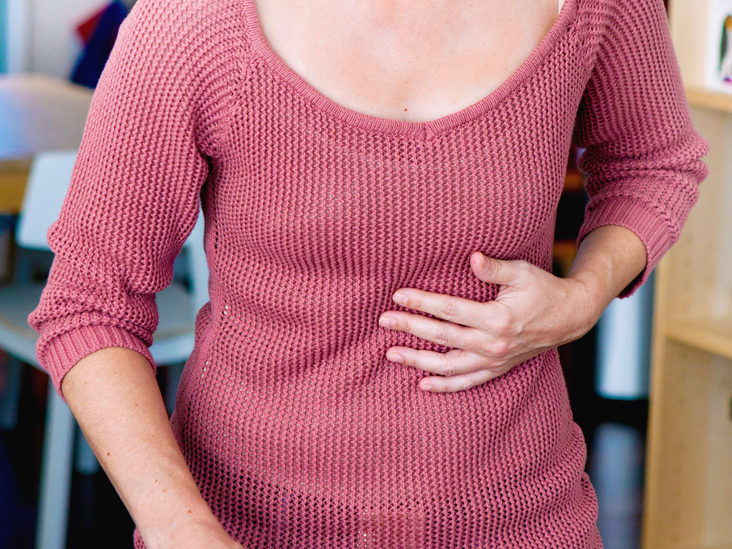Most of us will experience abdominal pain, which may be on the upper left side or at another location within the abdomen, at least once in our lives.
Abdominal pain is sometimes the result of a severe illness. But usually, the pain is mild and can be traced back to a minor disorder.
Pain and pressure in the upper left side of the abdomen can often be due to indigestion, constipation, and irritable bowel syndrome. If you experience this kind of pain, you should seek immediate medical attention.
Causes of Pain
1. Pancreatitis
The pancreas is a gland that aids in the secretion of digestive enzymes, which aids in breaking down food particles in the small intestine.
Inflammation of the pancreas (pancreatitis) will disrupt the functionality of the digestive system, leading to the buildup of digestive enzymes, which progresses into acute or chronic pain in the upper left quadrant of the abdomen.
The severity of the pain you may experience indicates how quickly the inflammation spreads. Other symptoms of pancreatitis include:
- Swelling and tenderness in the abdomen
- Nausea and vomiting
- Fever
- Rapid pulse rate
2. Pericarditis
Pericarditis is an inflammation of the pericardium, a thin sac-like membrane surrounding the heart. The pericardium provides the heart with lubrication to prevent tissue friction as it beats.
Pericarditis can present as an intense cutting pain in the abdomen’s upper left region, which is detectable using a stethoscope. Several conditions such as a tumor, metabolic disorder, or cancer can lead to the development of pericarditis.
If you experience this condition, your doctor may prescribe a narcotic pain reliever to ease discomfort.
3. Stomach Ulcer
A stomach ulcer is a painful condition that affects the stomach lining. It occurs when digestive enzymes become too concentrated and begin to digest the protective lining of the stomach or small intestine.
Generally, stomach ulcers are asymptomatic, but in some cases, you may experience symptoms such as weight loss, pain in the upper left side of the abdomen, indigestion, or heartburn.
Treatment usually includes medication such as antacids to reduce acid production and antibiotics if a bacteria causes it.
4. Indigestion (dyspepsia)
You can have indigestion when hastily eating a meal becomes a habit, eating spicy food, and consuming alcohol and carbonated beverages.
As part of treatment for this condition, your doctor will prescribe pain killers to relieve discomfort. You can also eat smaller meals and avoid triggers such as spicy food.
5. Kidney stones
Kidney stones are small hard deposits of salts in the kidney and can cause pain when passing out through the urinary tract. If not treated, kidney stones can be a reservoir for bacteria and cause a recurrent kidney infection.
Symptoms of kidney stones include:
- Pain in the abdomen
- Nausea
- Vomiting
- Blood in urine
Your doctor may recommend you drink plenty of water to help pass out the stone. In severe cases, your doctor may recommend surgery to remove the stone.
6. Heart attack
Heart disease is the leading cause of death in the United States. Statistics reveal that almost 659,000 people die in the United States each year. The most common symptom of a heart attack is tightness and chest pain. Other symptoms include:
- Shortness of breath
- Nausea
- Heartburn
- Fatigue
- Dizziness
Treatment options involve blood thinners, aspirin, a pain reliever, a surgically implanted stent. In severe cases, your doctor may recommend heart bypass surgery.
7. Constipation
Constipation occurs when the frequency of bowel movements decreases over a week or when there is a lack of bowel movements. Symptoms of constipation include:
- Having fewer bowel movements
- Hard stool
- Straining to have a bowel movement
- Feeling of blockage in the rectum
The treatment options recommended for this condition include:
- Eating high-fiber food
- Drinking plenty of water
- Taking an over-the-counter laxative
- Regular exercise
In rare cases, you may require surgery.
8. Gastroesophageal Reflux Disease (GERD)
A burning sensation is the primary symptom of acid reflux when stomach acid backs up into the esophagus and throat. GERD results from a weakness or transient relaxation of the lower esophageal sphincter (LE).
Symptoms of GERD include:
- A burning sensation in the chest
- Vomiting
- Problem swallowing
- Sore throat
Medication for treating Gastroesophageal Reflux Disease (GERD) includes antacids, over–the–counter medicines, and proton pump inhibitors (PPIs).
If ongoing pain progresses or disrupts your daily activities, visit a doctor as soon as possible for diagnosis and treatment.

